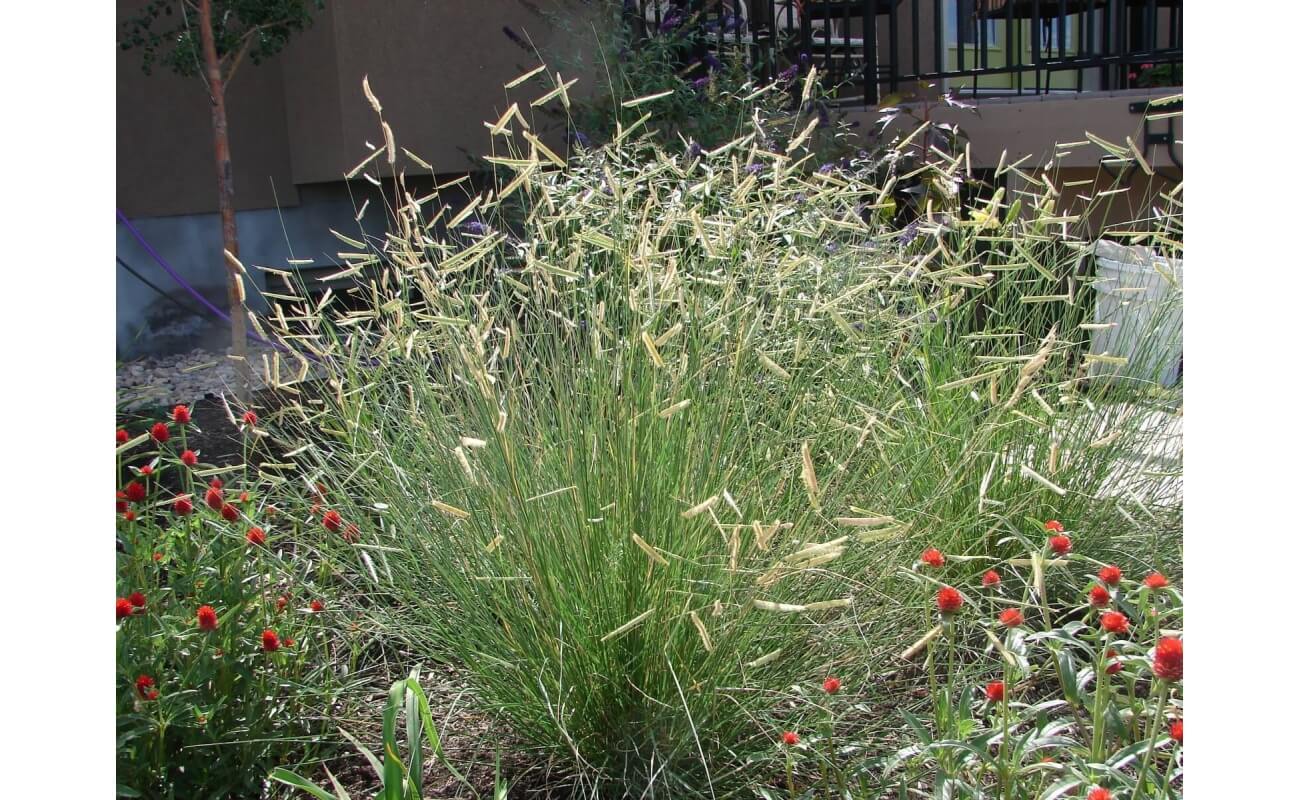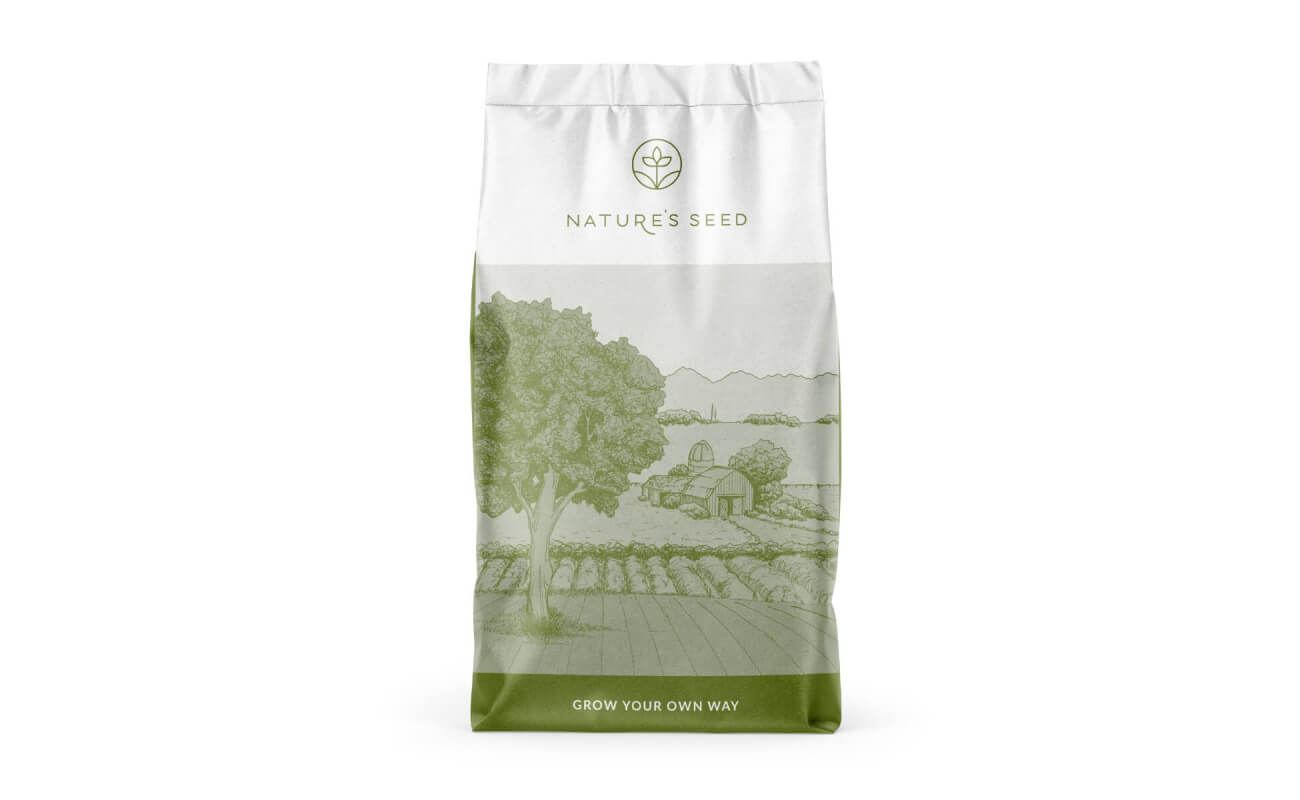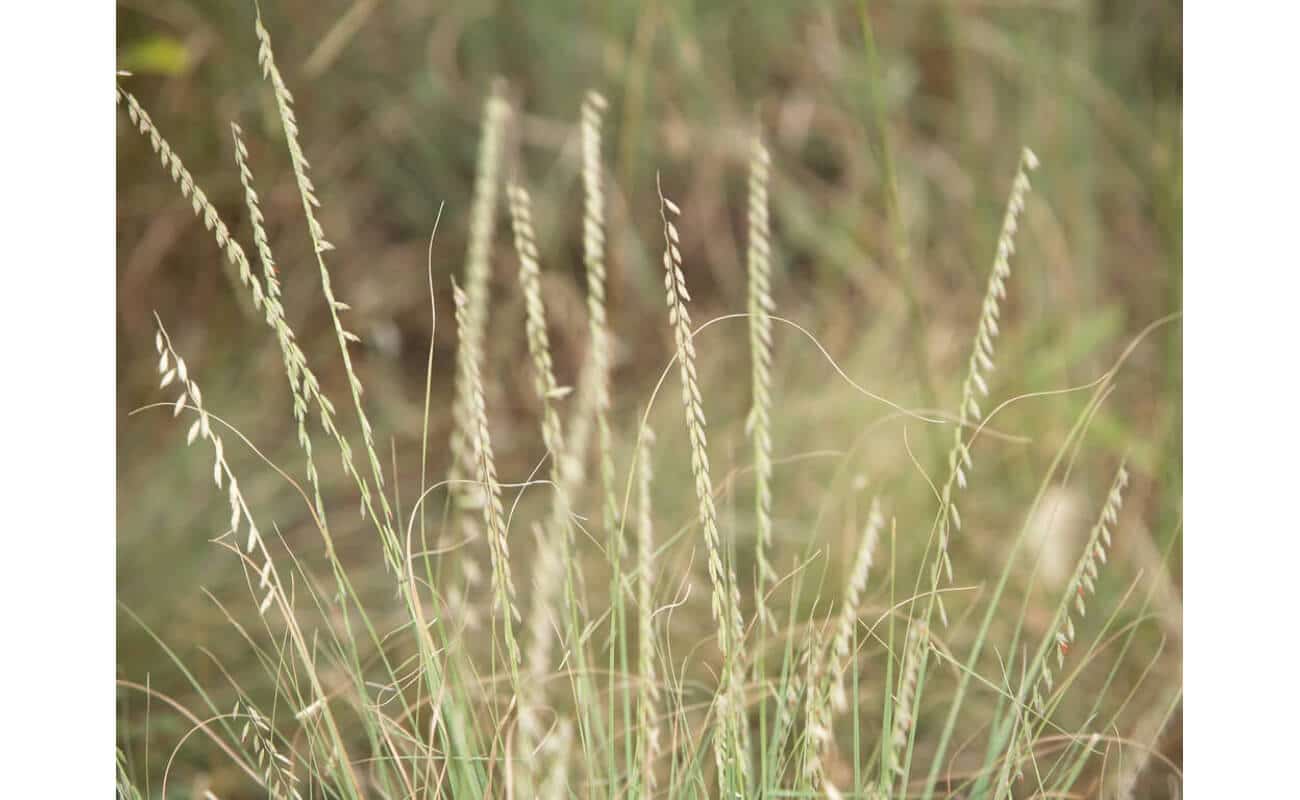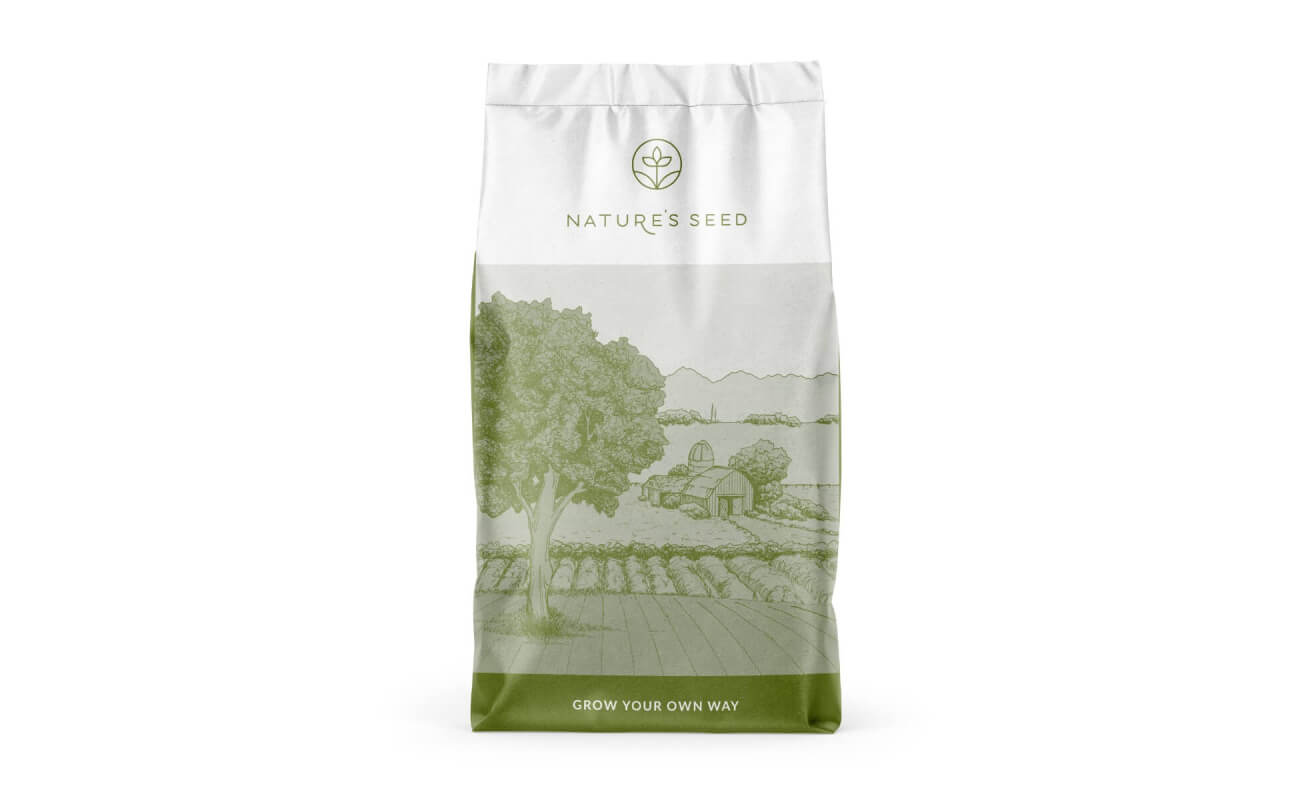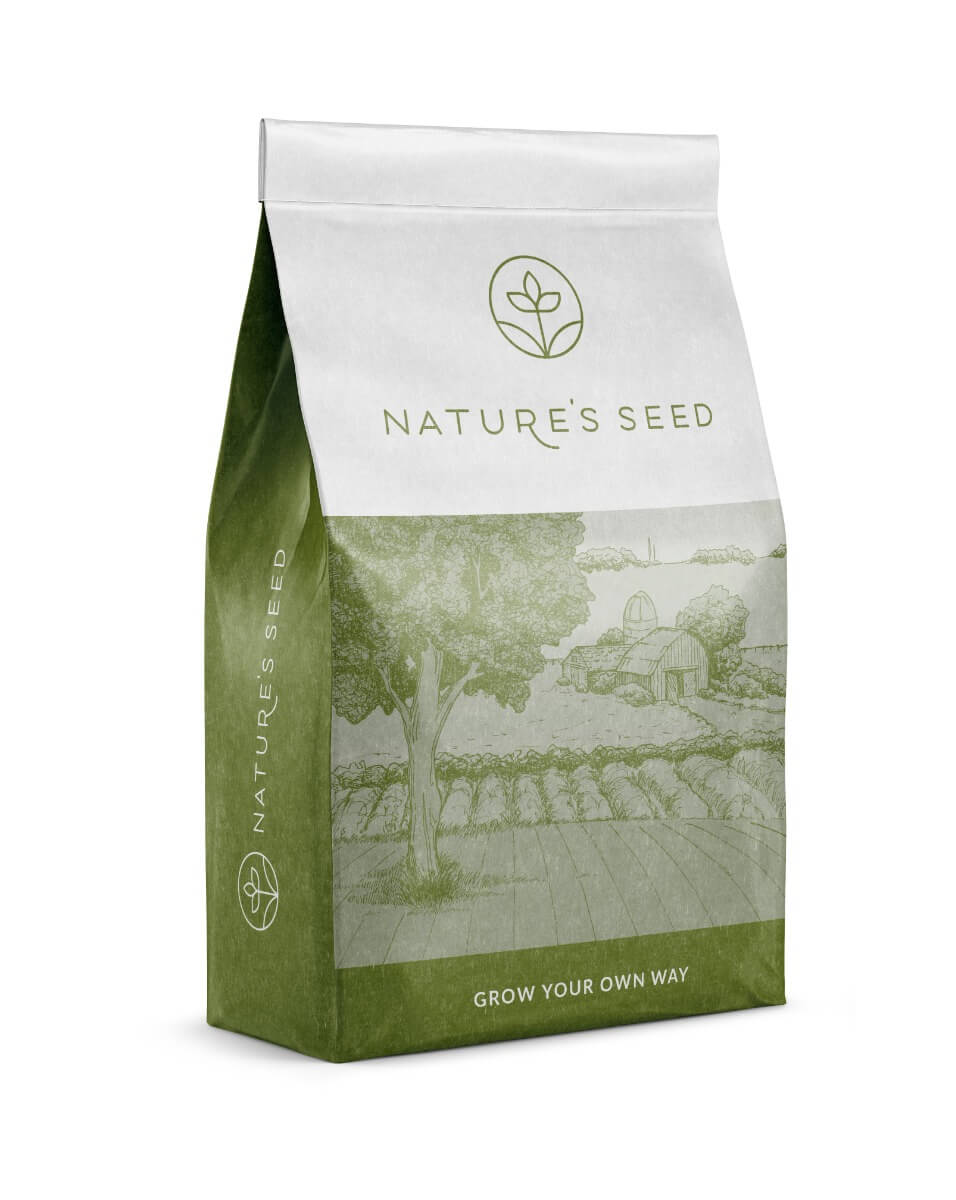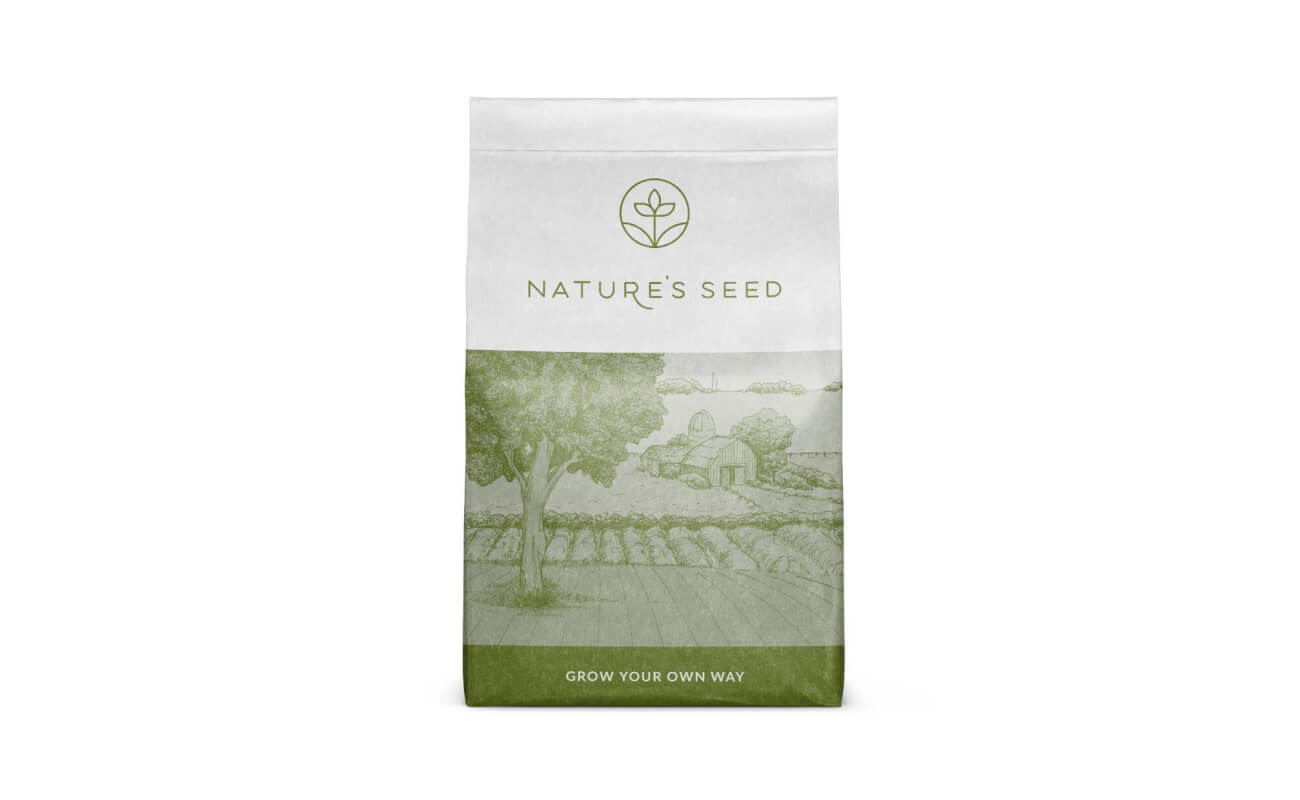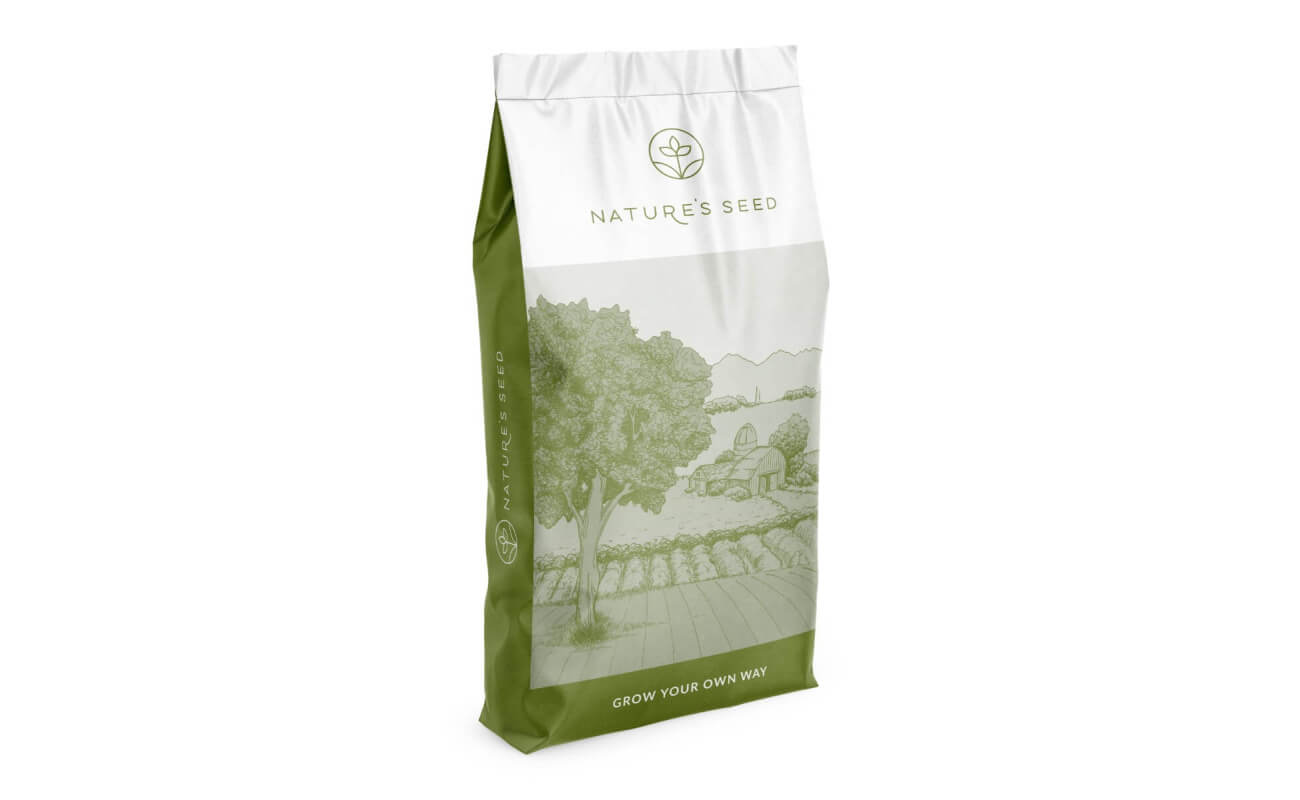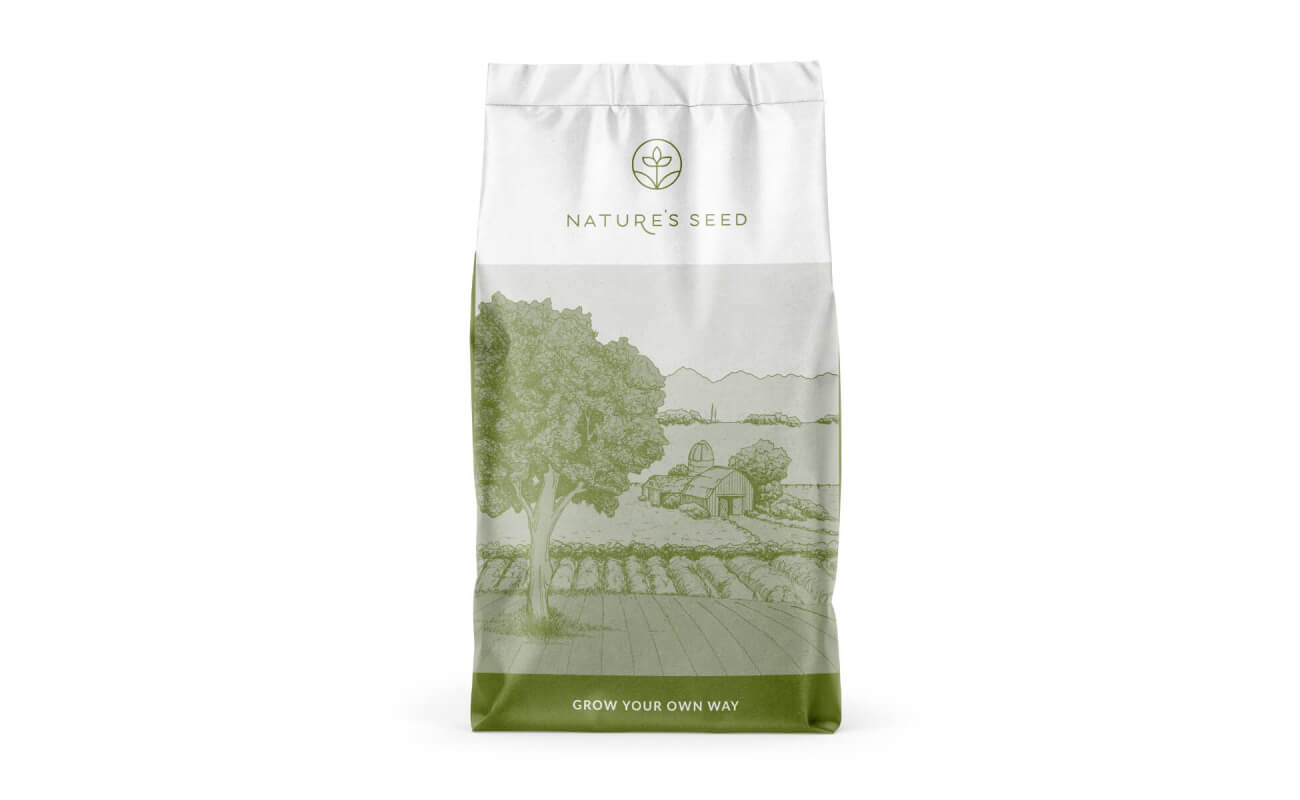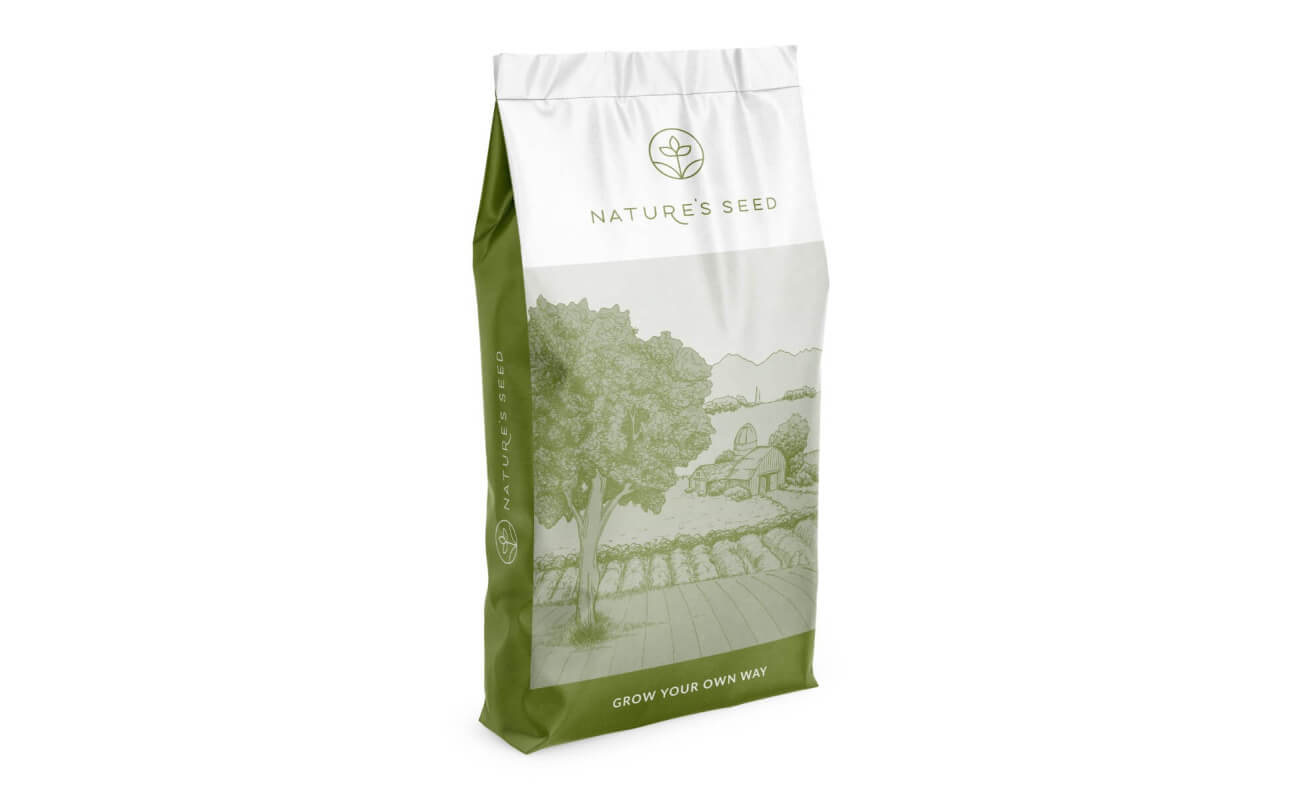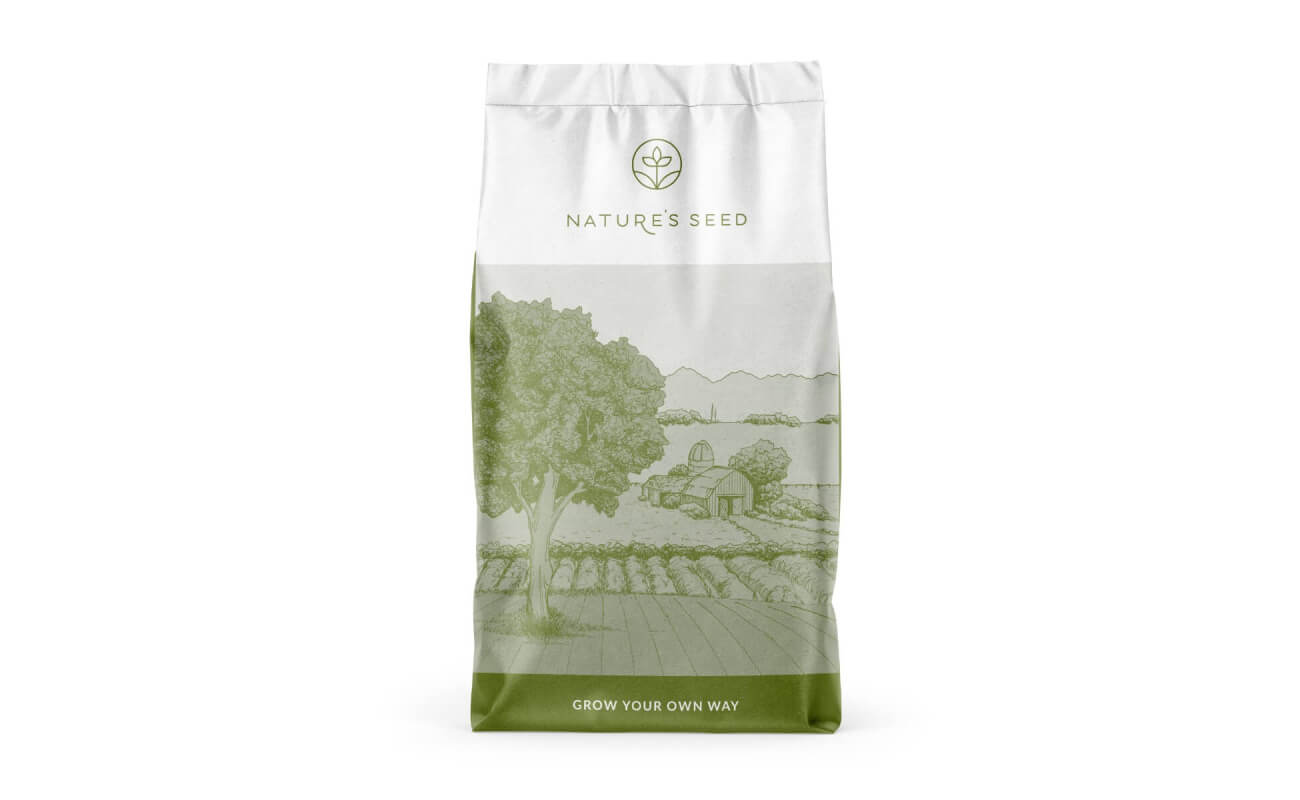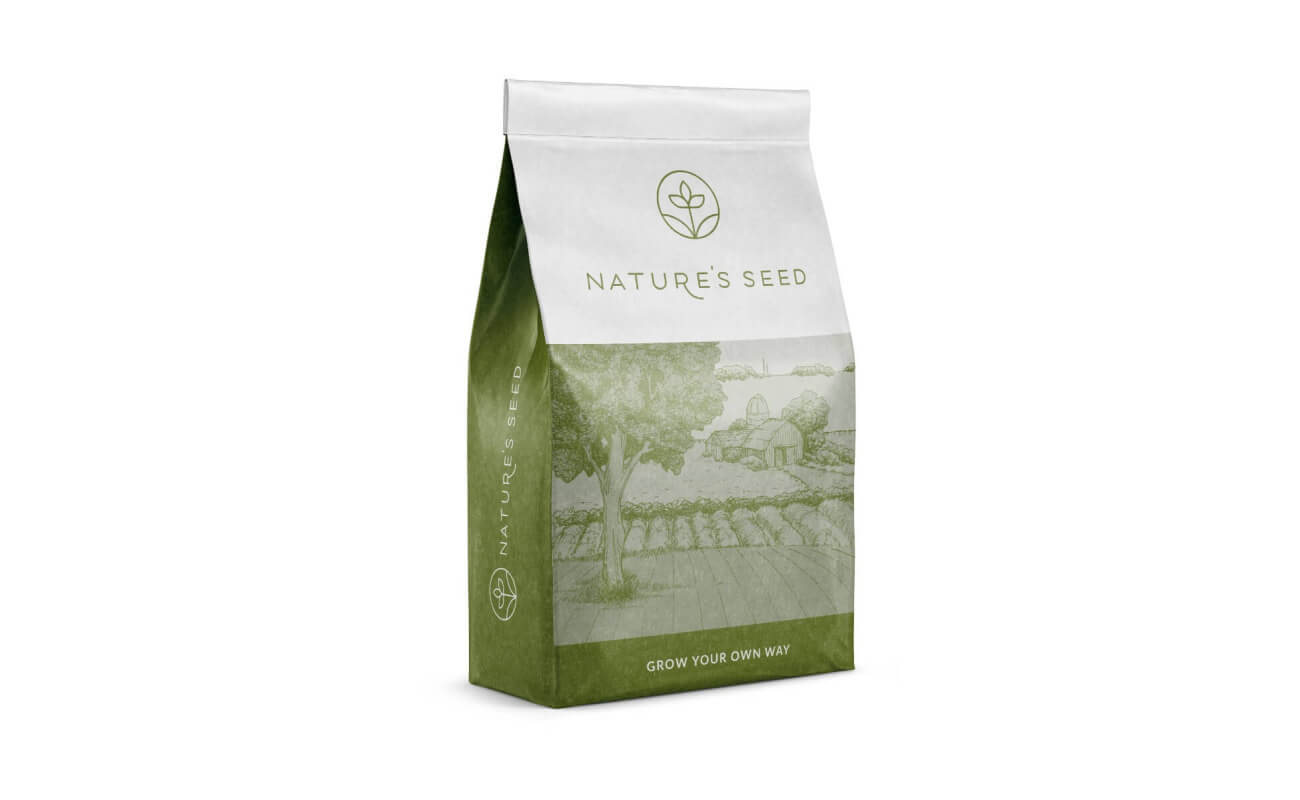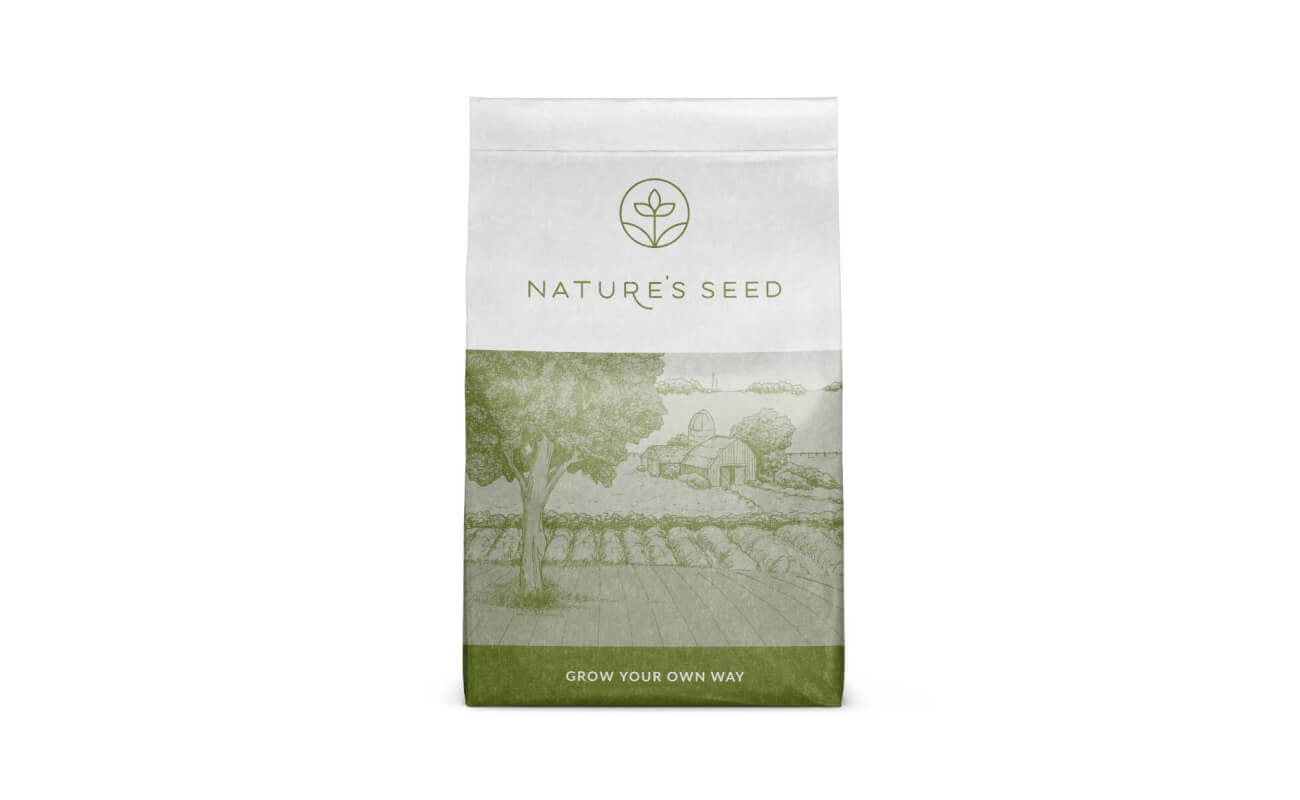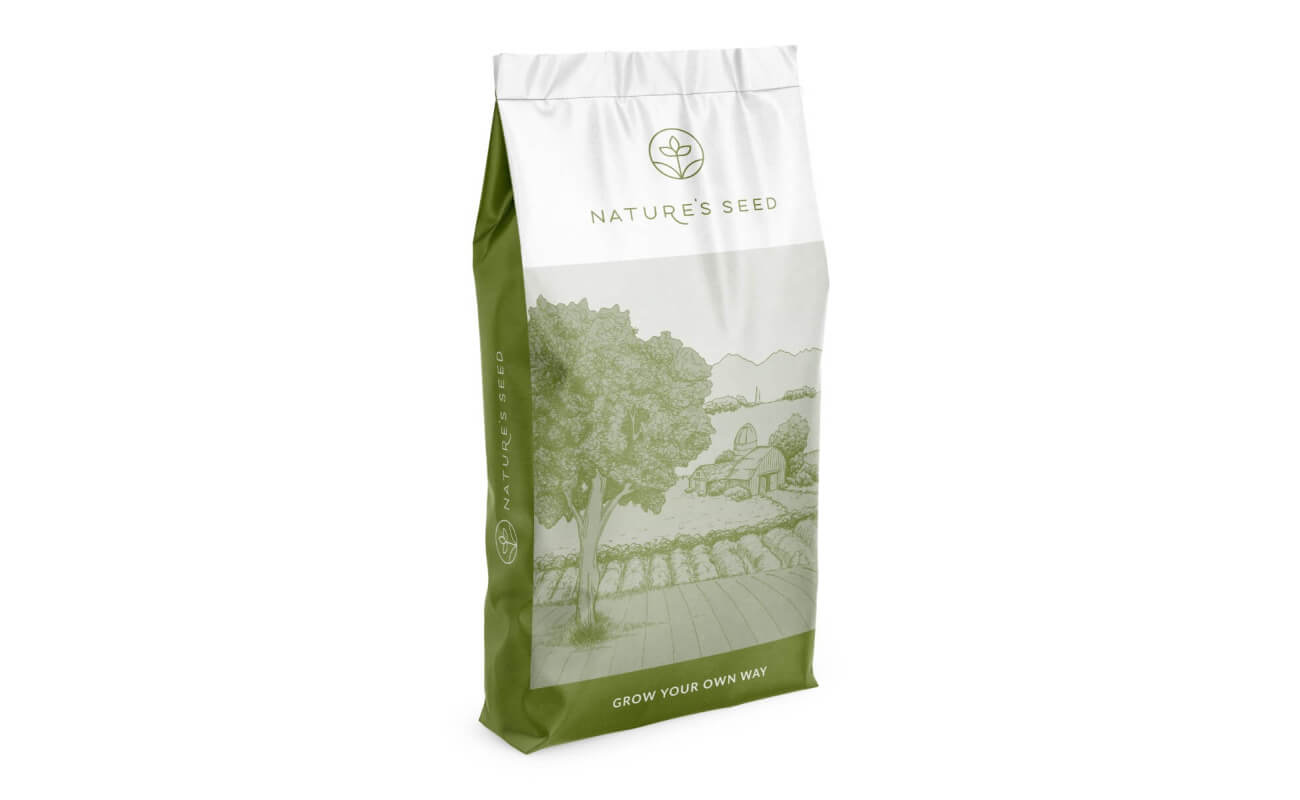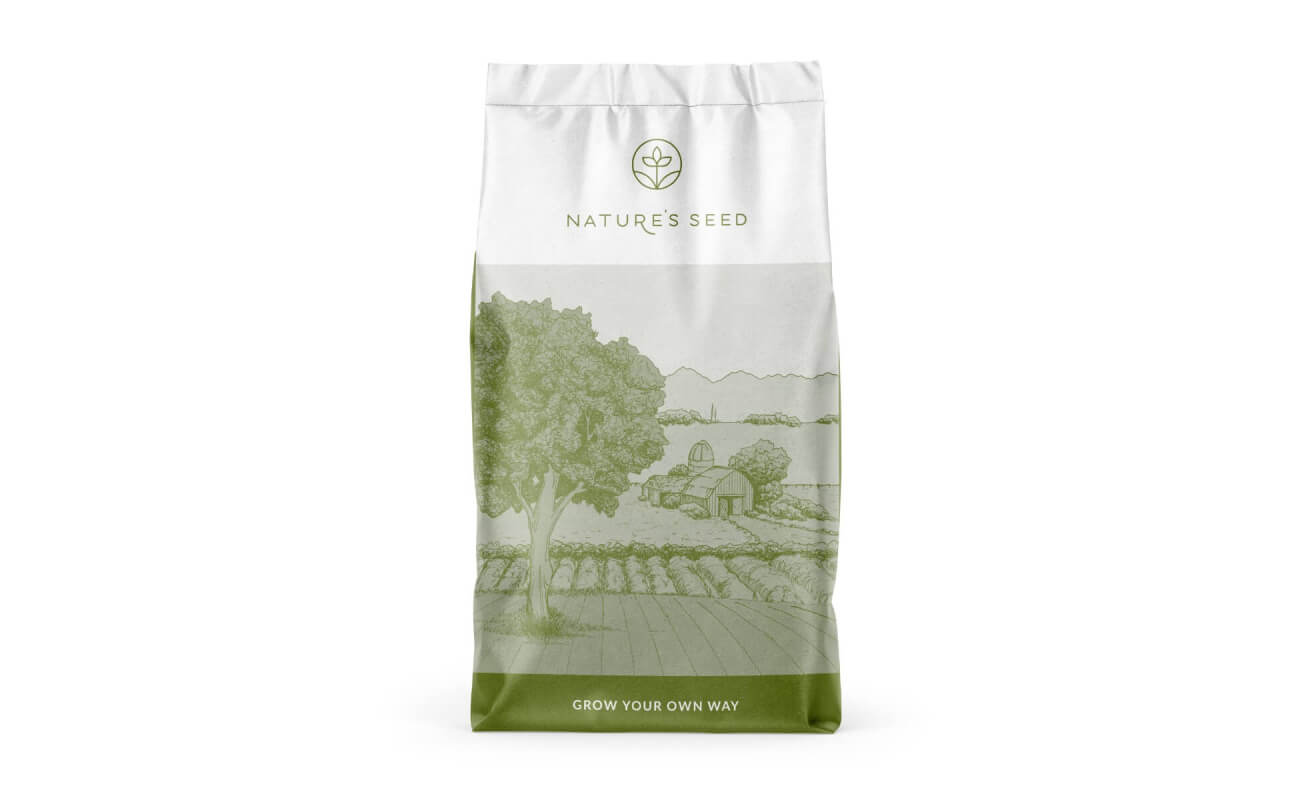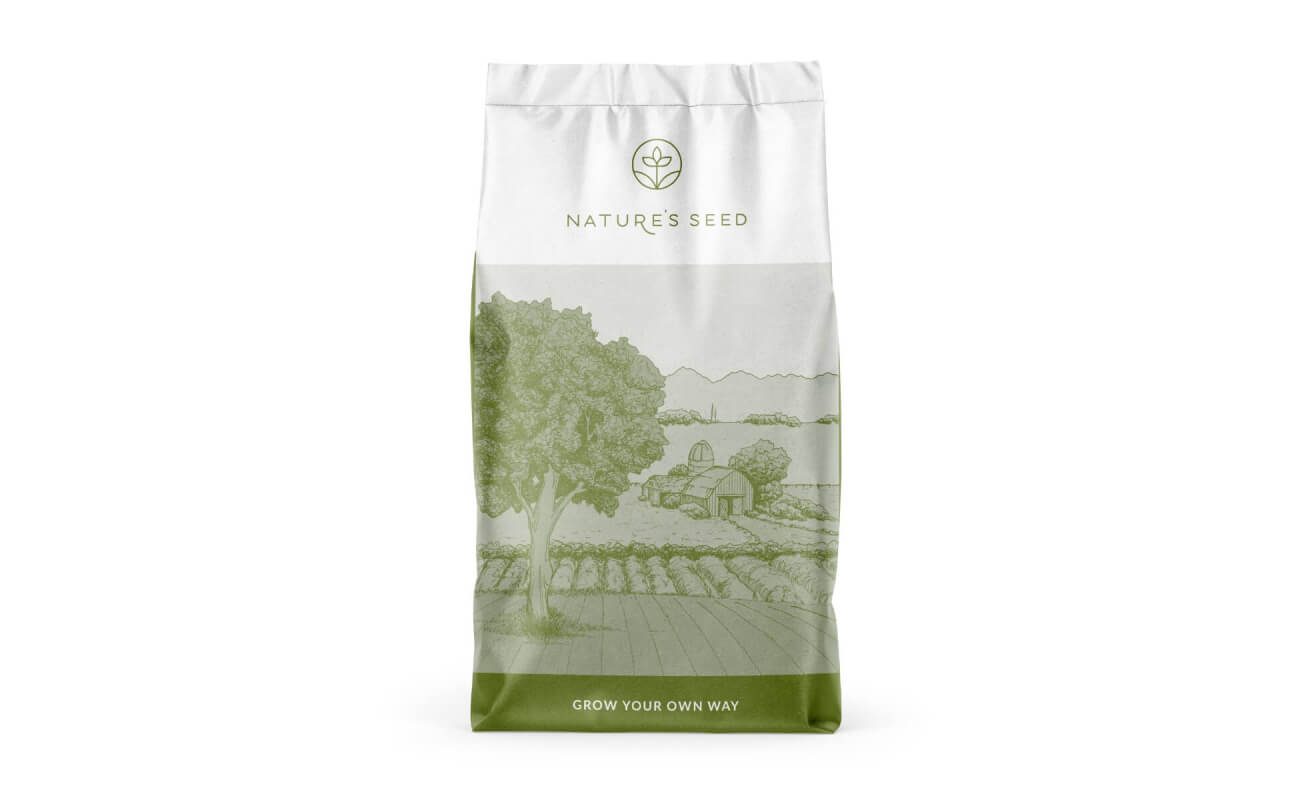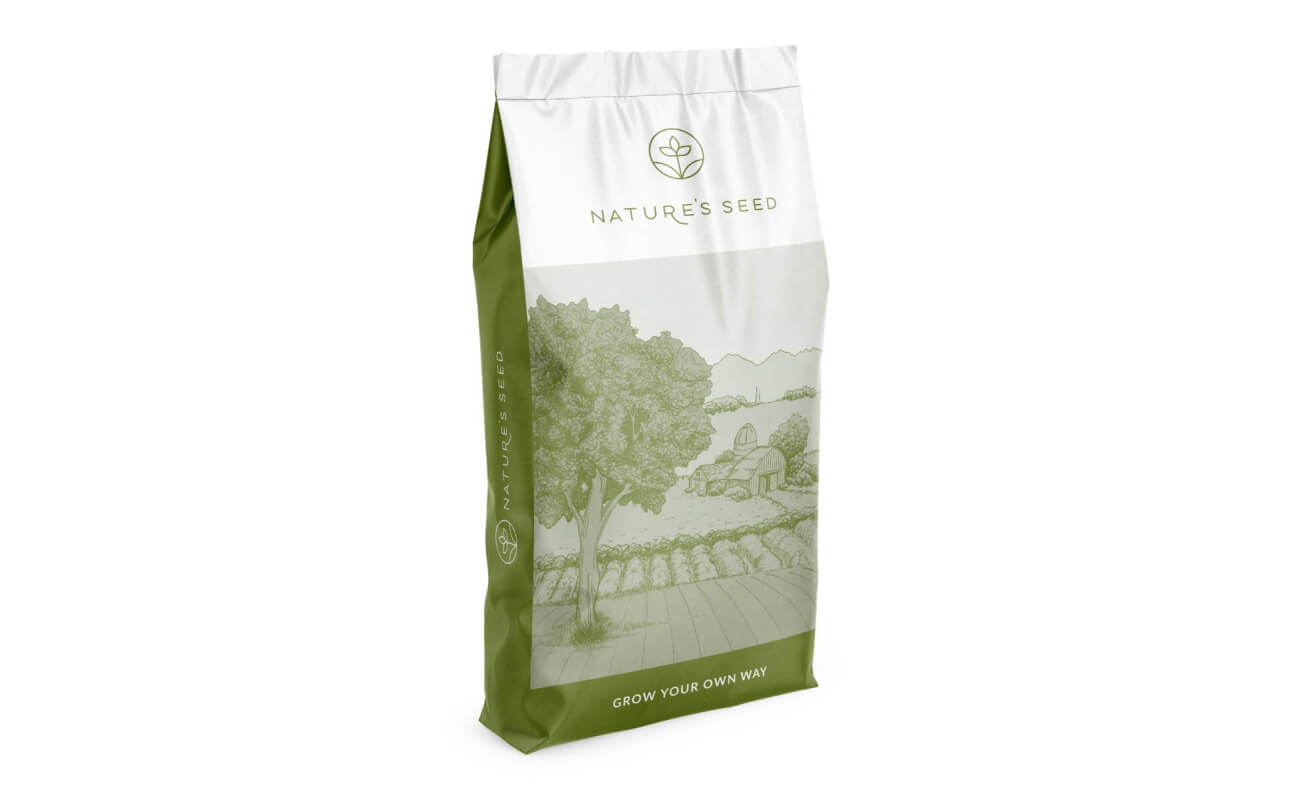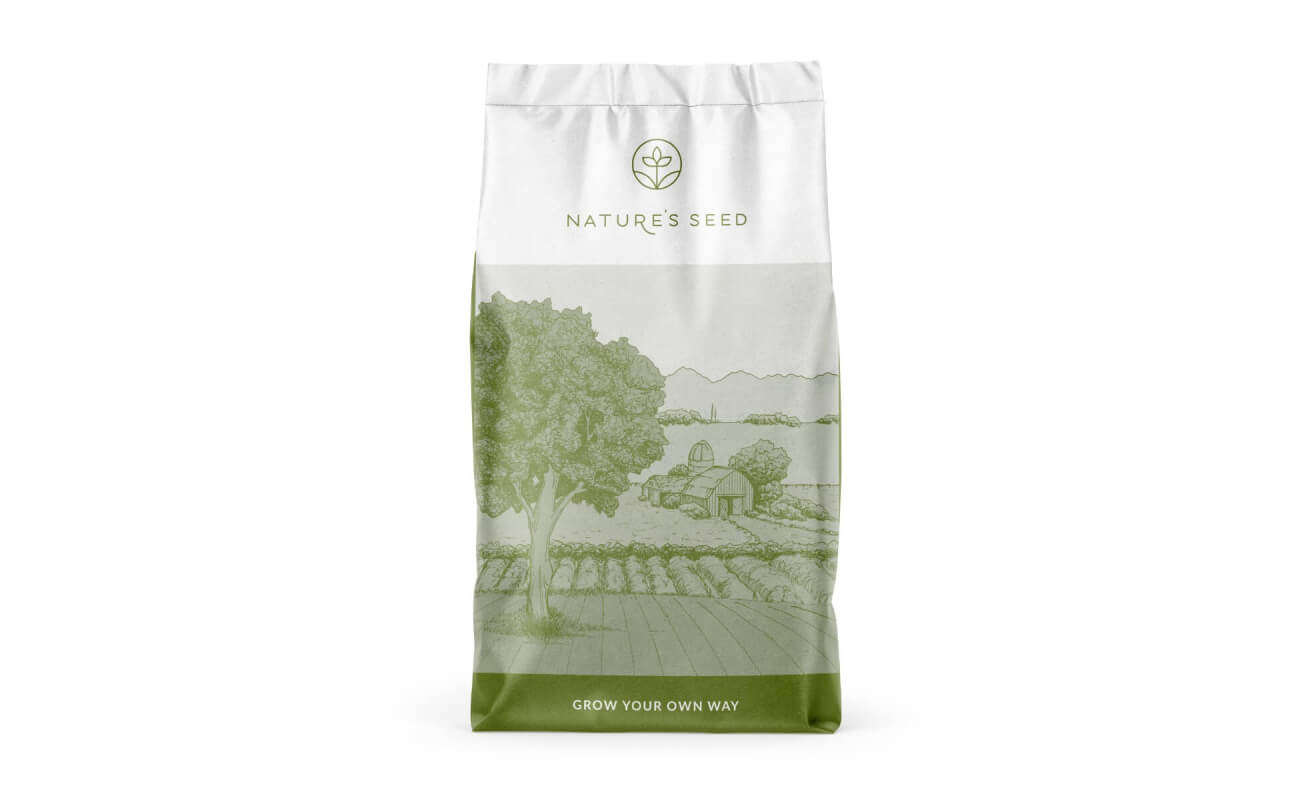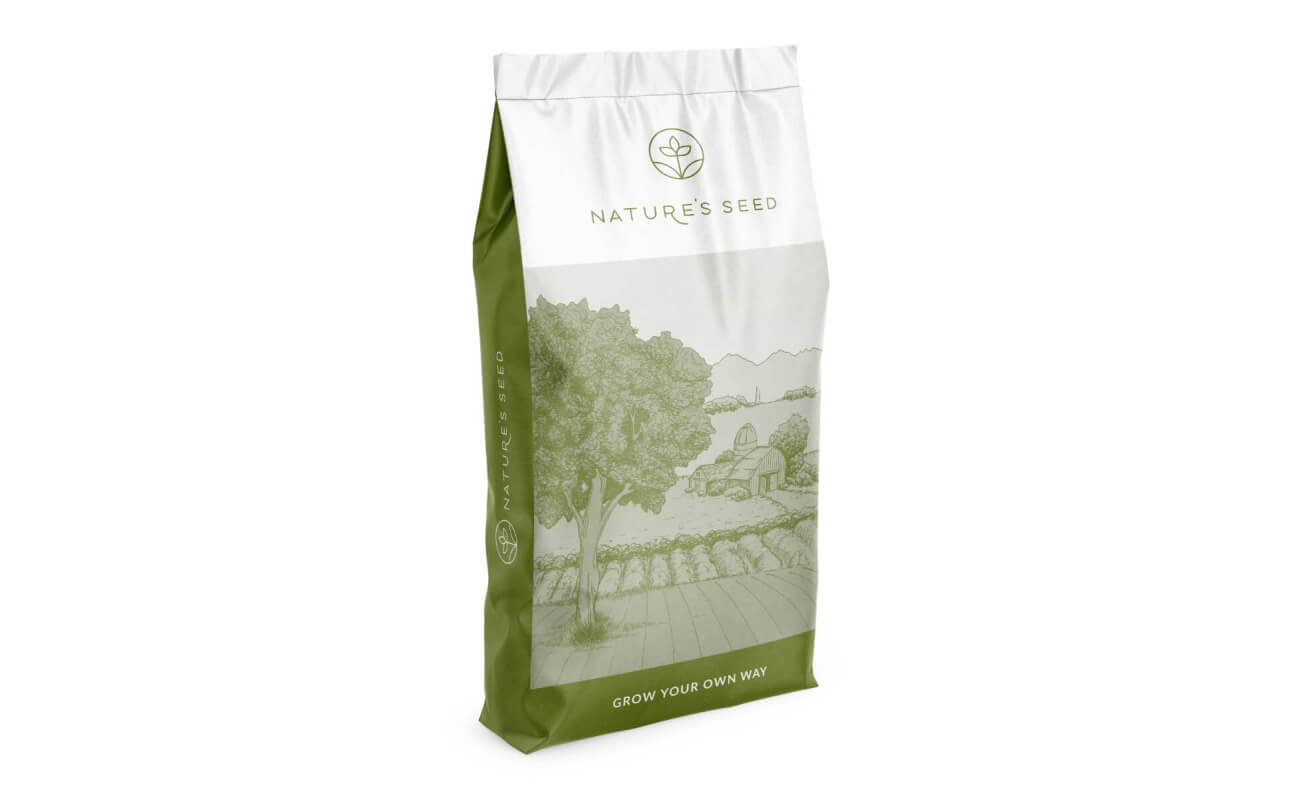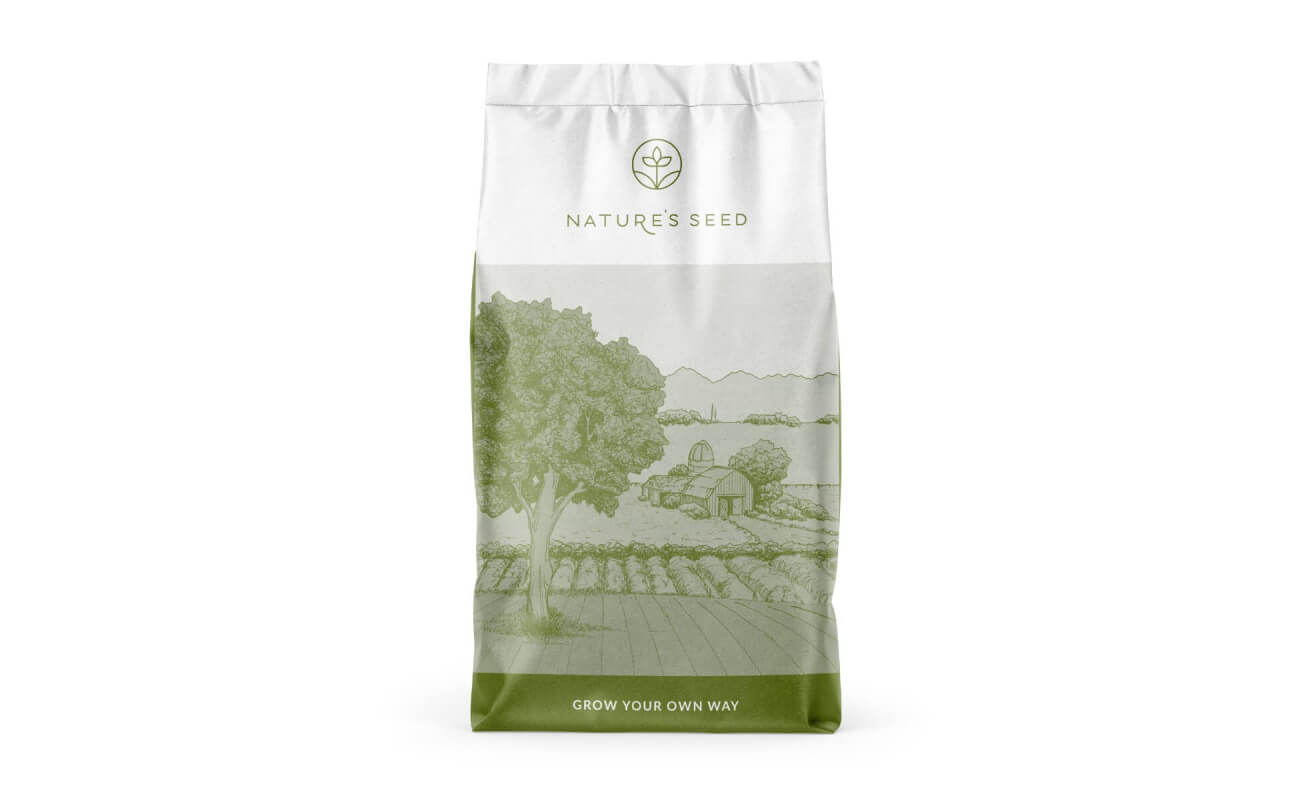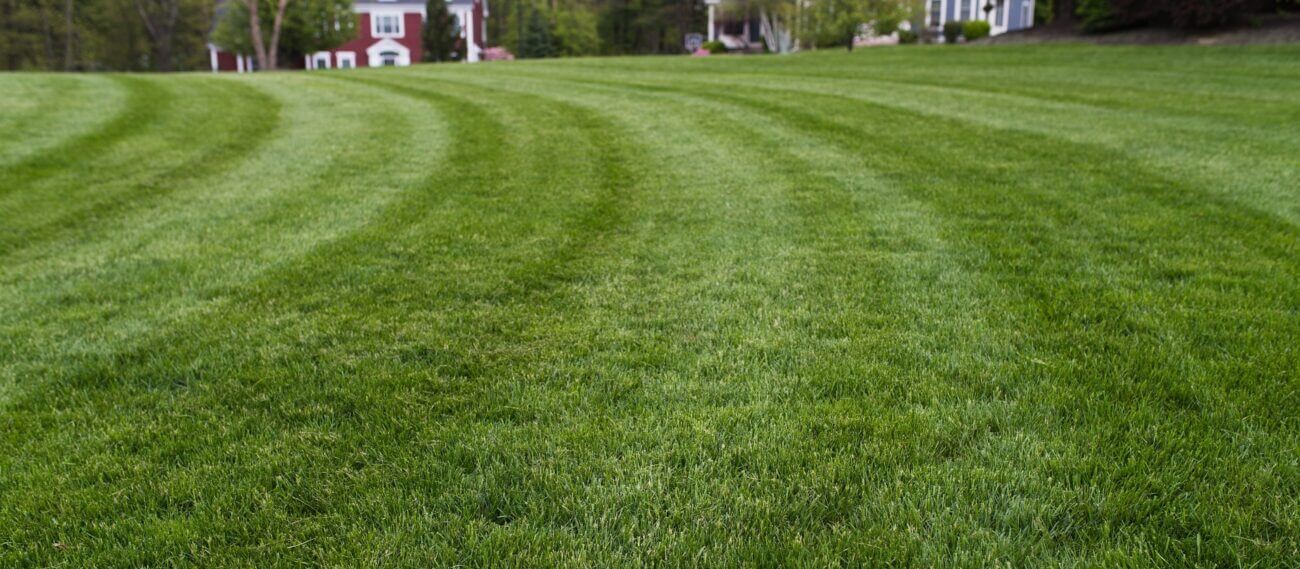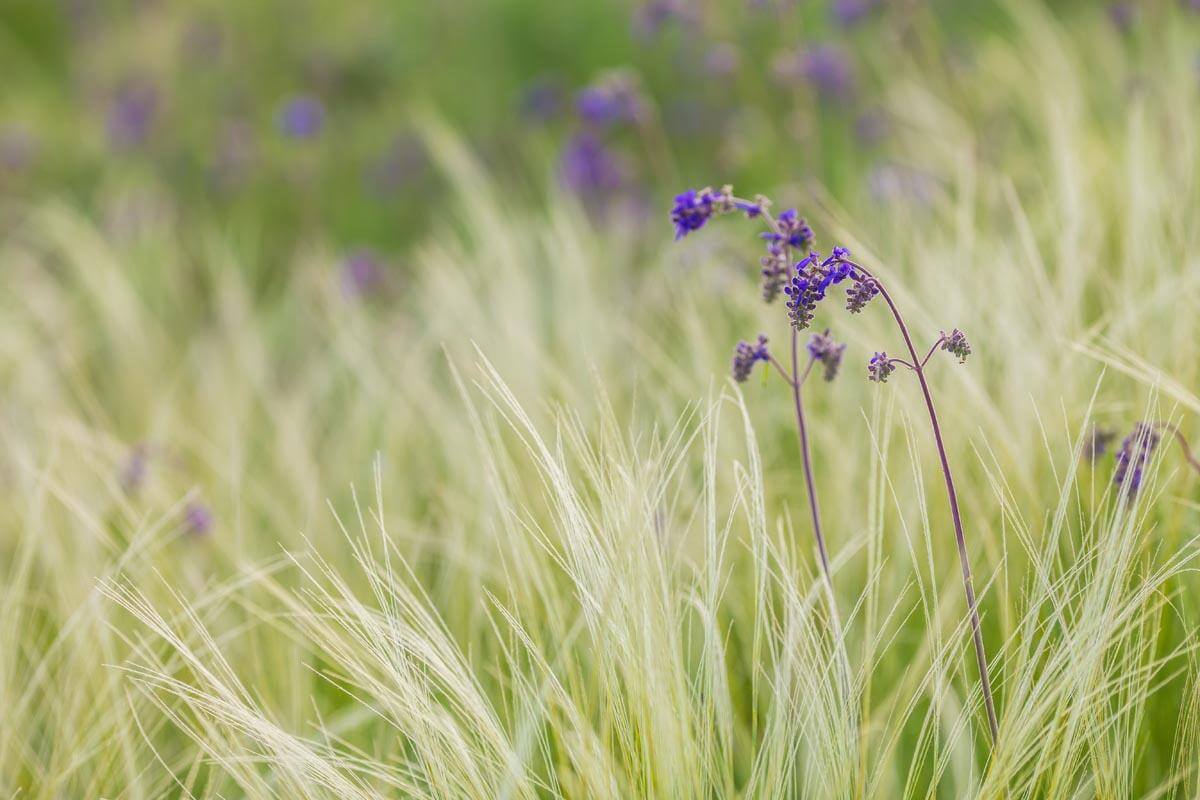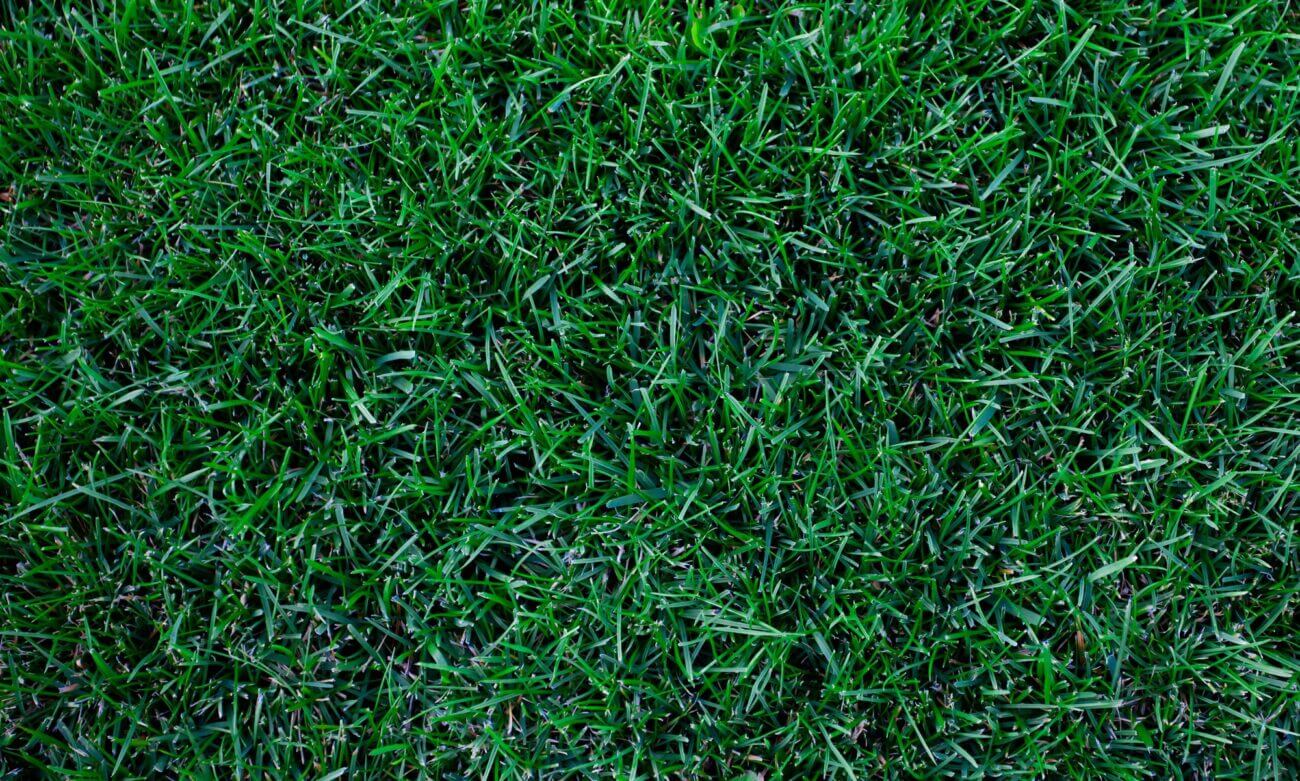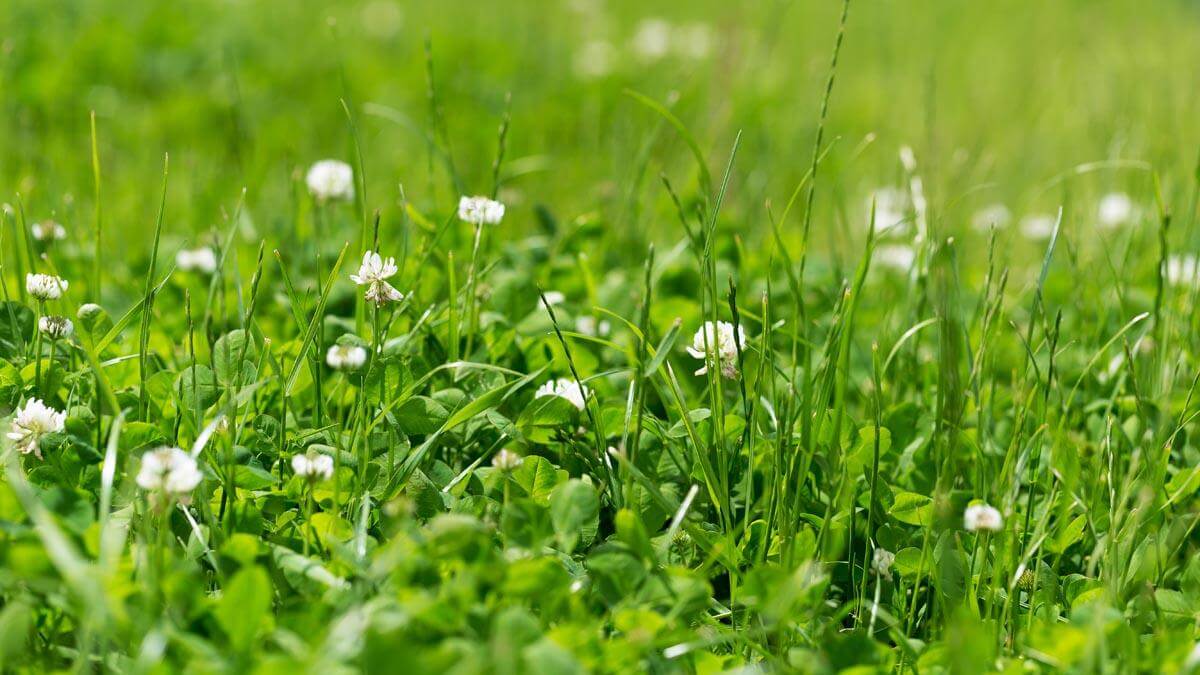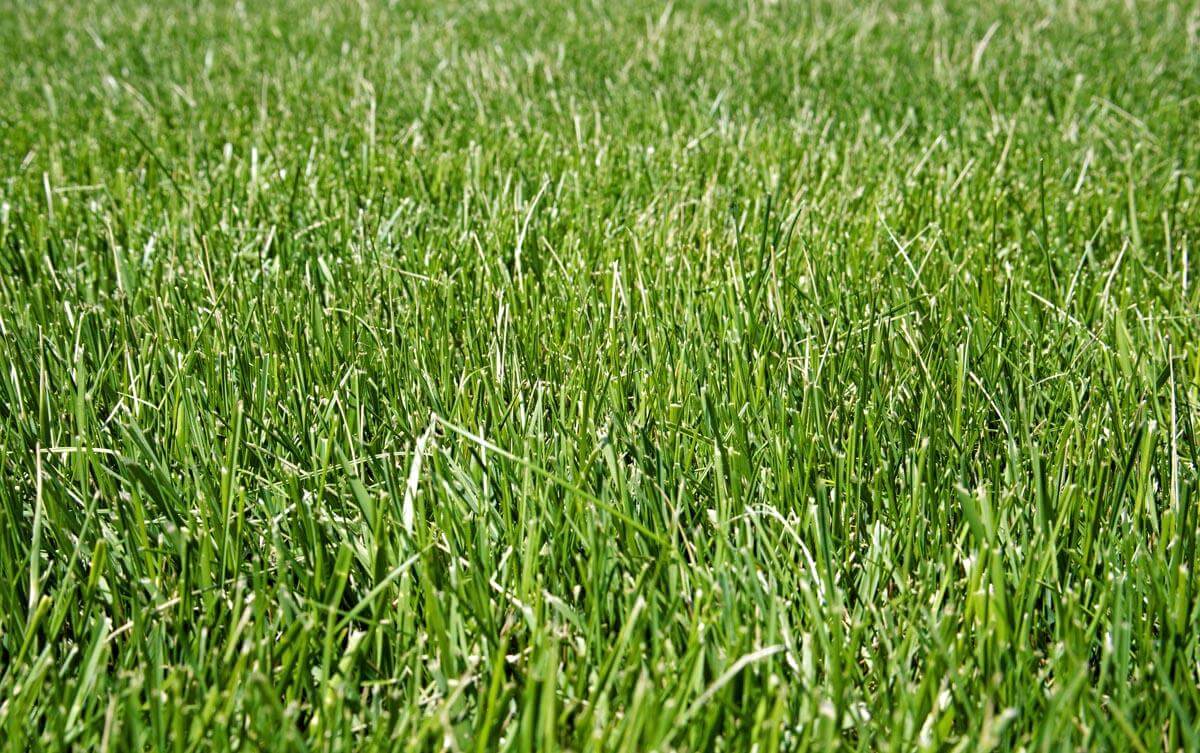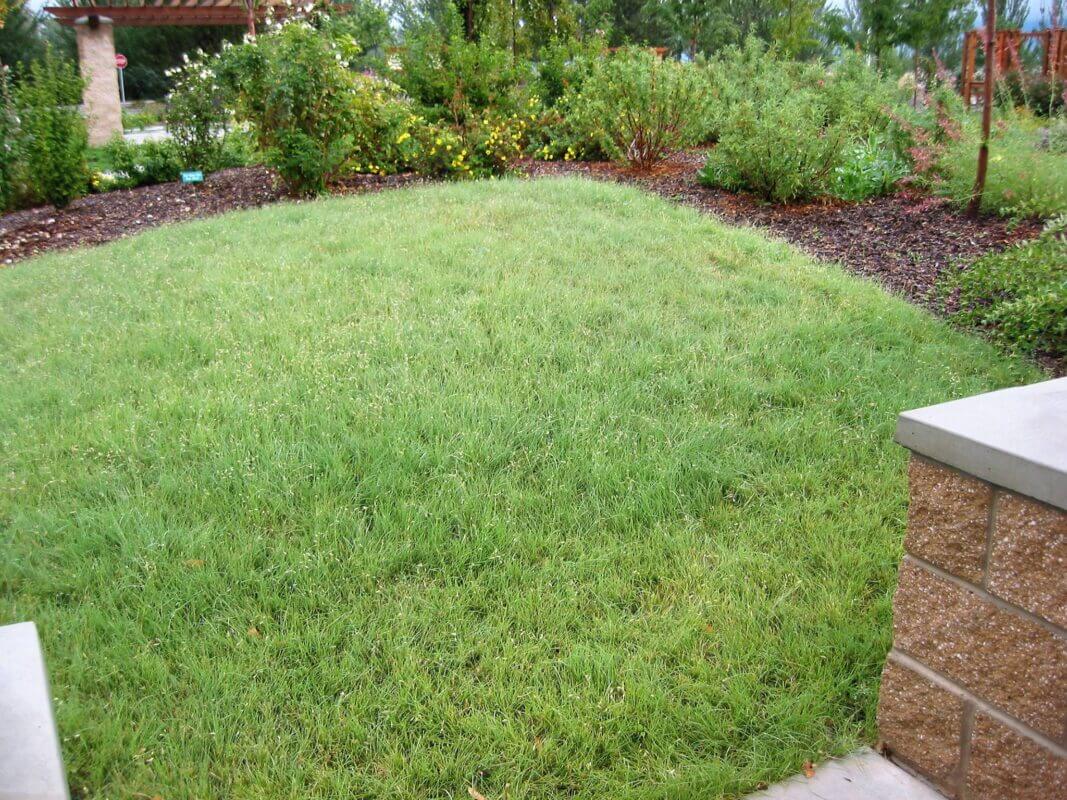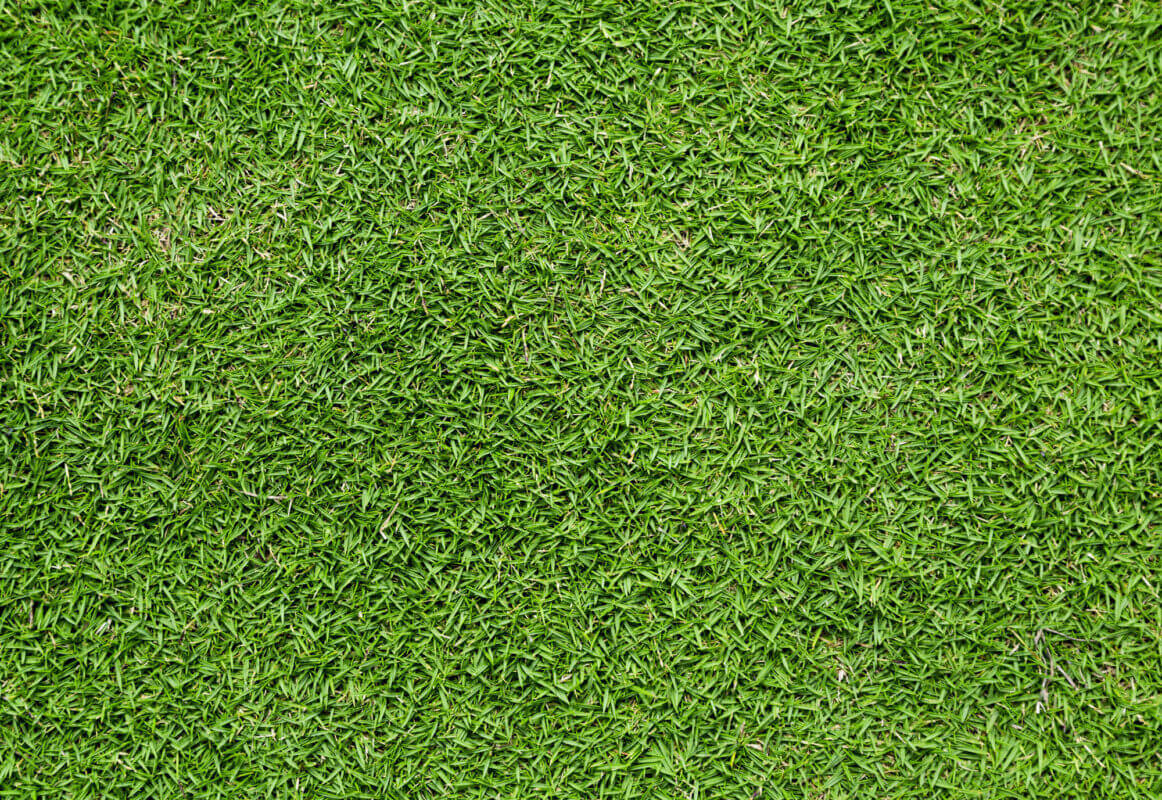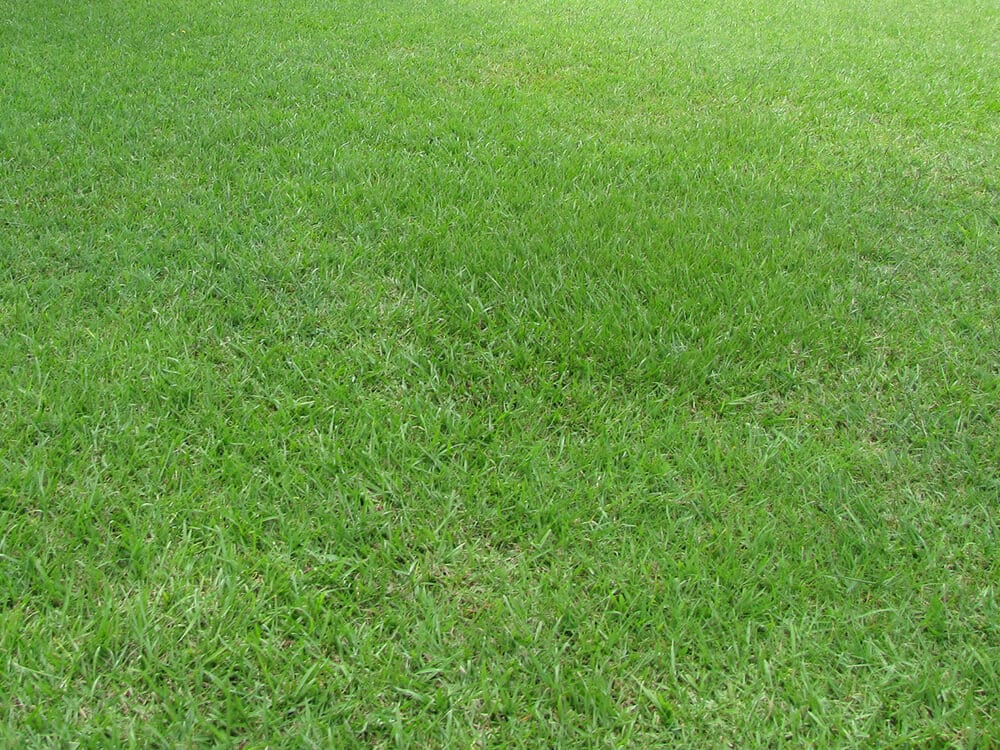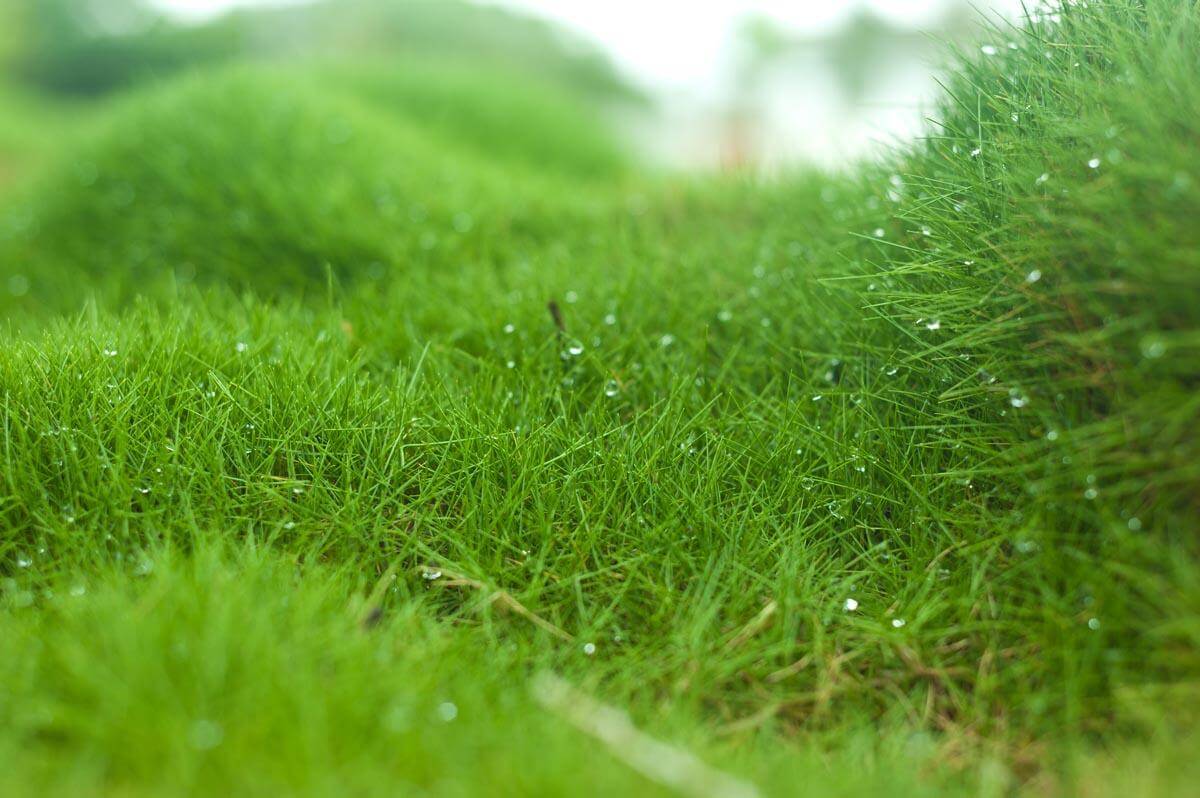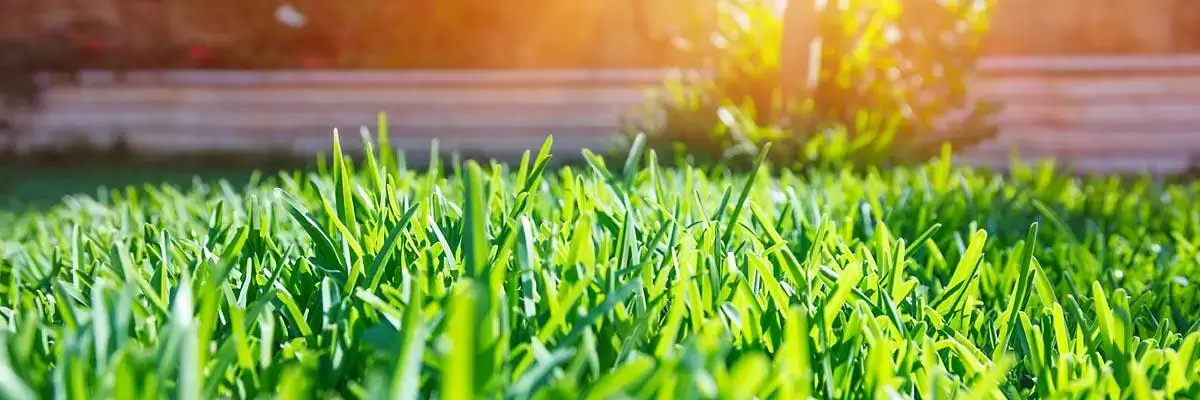Lawn Seed
Our Grass Seed Products
Our Grass Seed Categories
America’s love for lawns is apparent — but not everybody has such good luck when it comes to a green lawn. These days there are so many options and styles that it’s essential to know what the best grass seed for your lawn is.
Nature’s Seed believes that a great lawn starts at the seed. That’s why we provide high-quality bags of seed with no added filler. Read below to learn the in’s and out’s of the lawn seeds we offer, where you can grow them, and other considerations when buying grass seed for your lawn.
Grass Seed
Things to Consider When Buying Grass Seed
You'll have to think about whether your lawn is dying or damaged, whether it's for pasture or forage use, and what kind of sun, shade, and rain it gets.
Choose Grass For Your Region
You’ll want to narrow down your list of choices to start, and for that we recommend our calculator that tells you the best seeds by region. Knowing what kinds of grasses do well in your area is the right way to start because many cool-season types of grass will go dormant and dry up in the southern summer months.
The Purpose of the Grass
After you’ve narrowed down types of grass ideal for your climate, it’s time to think about how you’re using the grass:
- Is it for your front lawn?
- Will there be a lot of damage or traffic, like grazing and playing?
- What type of soil do you have?
- How much sun and shade does your lawn get?
- How much rainfall do you get each week?
Answering these questions will help point you to the right grass seed. For example, in hot climates, lawns with sandy soils, lots of sun, and dry skies might be a perfect place to plant Bahia seed (since Bahia is known to be hardy with soil types and drought-tolerant). Explore your options by region and find the best one for you.
Buy Quality Grass Seed
Buying quality lawn seed might sound obvious, but it’s sometimes hard to tell the difference between top grain and mediocre seed just by looking at the bag.
The good news is that there are general rules of thumb that you want to abide by:
- No more than 0.5% weed seed
- 0% noxious weeds
- The inert matter should not exceed 2%
- Germination should be 85% or more
At Nature’s Seed, we ensure that every bag meets or exceeds these guidelines — and big-box stores can’t make that promise.
Learn
Get To Know Your Grass Types
FUN FACT: In early America, grass seed was primarily used to feed livestock.
There are hundreds of species of grass, but there are only two grass types: warm-season grasses and cool-season grasses. Appropriately choosing species for your climate from these two overarching types will ensure a healthy and thriving lawn.
What To Know
Some warm-season and cool-season grasses do well in what’s called the “transitional zone,” which is a belt that runs horizontally through the middle of the United States.
These grasses are a mix of warm- and cold-tolerant to certain extents. But there are important differences between the two types:
Warm Season Grasses
Warm-season grass originates in the south and does best in hot weather. It goes dormant and turns brown with a cold temperature. It does better planted in the spring so it can grow throughout the warm summer months.
Cool Season Grasses
Cool-season grass originates from the north and grows rapidly in the spring and fall. Cool season grass will turn brown in the high summer heat, therefore it is generally best to plant this grass in the late summer or early fall.
Plant Hardiness Zones
The planting zones are determined by:
- Length of the growing season
- Timing and amount of rainfall
- Winter lows
- Summer highs
- Wind
- Humidity
Warm Season Grasses
Warm-season grasses excel in warm climates. They also do well in poor soils with low moisture-holding capacity. When warm-season grasses dry out, it can be harvested and stored to dry out as hay.
Bermuda Grass
Like most grasses present in the United States, Bermuda grass isn’t native to the U.S. And despite what its name implies, it’s not native to Bermuda! It originates from East Africa, arriving in the states during the 1750s as a forage grass for cattle.
Because of its hardiness, bermudagrass is a favorite in the southwestern U.S. It is a dense and adaptable turf grass that is used for lawns, pastures, athletic fields, golf courses, and parks, making it perfect for high-traffic areas. It does best in warm weather, but is also cool-tolerant to a certain extent, although it will go dormant below 60°F.
It grows as far as Virginia, excelling in tropical climates where it will stay bright green year-round. Its planting zones are 7, 8, 9, and 10, which covers the southern U.S. with a distinct line from Virginia to some parts of New Mexico, Arizona, and California.
Buffalograss
Buffalograss is a low-maintenance, tough turf grass that is native to the Great Plains from Montana to New Mexico. It was first used as turf in the 1930s and impressed many homeowners with its cold-resistance and drought-tolerance.
If you look closely, you’ll notice its dark bluish-green color with slightly curled blades at the ends. Water needs are minimal so that you can expect a bright green lawn throughout the hottest temperatures of the summer. However, because it’s not a thick grass, buffalograss is susceptible to weeds.
Buffalograss has a wide planting zone, ranging between 5, 6, 7, and 8, taking up the majority of the transitional zones and all of the southern U.S. This grass is ideal for those who want a vibrant lawn throughout the hottest of summers.
Zoysia Grass
Zoysia grass is a dark green grass that is relatively new to the United States, and was introduced from the coast of the Philippines in Manila in 1911. Ideal for lawns with high-traffic and full to partial sun, it has a slow establishment rate. But the good news is that once it forms, zoysia most often resists any weeds.
Zoysia is drought-tolerant, so water needs are minimal — however, if not watered just right, it will go dormant. It will turn brown after the first frost but resumes growth at 70°F. Although its hardiness allows it to grow in a variety of soils, it doesn’t do well in overly-wet soils.
Its planting zones are 7, 8, 9, and 10, covering the majority of the southern U.S., with a few exceptions in the northern parts of Arizona, New Mexico, and Texas.
Bahiagrass Grass
Bahiagrass is native to South America and is primarily used in the southeastern U.S. It is an excellent lawn seed for lawns that need a pick-me-up due to poor soils and areas without plenty of rainfall. It is also low-maintenance without requiring too much water or fertilizing.
However, it will die out in the shade, in acidic soils, near saltwater, or if there’s too much foot traffic. It is light green with coarse, short leaves that are susceptible to diseases.
Its planting zones are parts of 1, 2, 5, 8, 9, and 11. This makes it unique, covering the majority of the southeastern U.S. from Virginia to Florida to Texas. However, it doesn’t do well in extremely arid areas like New Mexico or Arizona but excels just fine in all of California.
Cool Season Grasses
Although cool-season grasses take up the majority of the U.S., it’s essential to know which species will do best in your area. Check out our list below and be sure to refer to a planting zone map.
Kentucky Bluegrass
Kentucky bluegrass is a meadow-grass that is native to Europe, North Asia, and the mountains of Algeria and Morocco. Sometime between the 15th and 19th century, the Spanish Empire brought these lawn seeds in mixtures with other grasses. Today, Kentucky bluegrass is used all over humid, cold parts of the U.S.
Kentucky bluegrass is often used as a pasture plant, athletic fields, and lawns and gardens. The blades are thin with rounded tips like the bow of a boat, but it grows densely which makes it traffic-tolerant. However, it does have a shallow root system which means it requires frequent watering — but it spreads quickly, maintains density, and heals quickly after damage.
Because of its hardiness, Kentucky bluegrass thrives in planting zones 1 through 7, which is all across the northern belt of the U.S., from Maine to parts of Oregon, including transitional zones. In these climates, it remains green and lush with the right watering. What more could a homeowner want?
Perennial Ryegrass
Perennial ryegrass is perhaps the most versatile grass seed in the U.S. It is ideal as pasture seed and for home lawns and gardens, where it establishes quickly, has a long growing season, tolerates traffic, and recovers quickly from damage.
Perennial ryegrass is an excellent targeting grass seed. It does best in cold-weather regions for pastures and turf, serving a year-round presence as opposed to annual ryegrass, which goes dormant during the hot midsummer.
You can find perennial ryegrass all across the U.S., serving as a cool-season lawn in the northern half and used to overseed warm-season grasses in the southern parts. It does best between planting zones 3 through 7.
Fine Fescue
Ideal for the northeast, northwest, and the transitional zones, fine fescue is a disease-resistant, bunch-forming grass that originates from Europe. It was introduced to the U.S. in the early 1800s when lawns became fashionable to Americans, especially for those who craved a year-round lawn that grows quickly.
When planting fine fescue, it’s crucial to spread across the lawn carefully. Since it grows in bunches, it can be easy to plant too much in one spot. Fescue is a favorite for many homeowners and farmers. For example, certain species like red fescue help with erosion control, are great as cover crops, for golf courses, playgrounds, and even pasture for deer, elk, and moose.
Did You Know? Red fescue is actually disliked in some regions because it can become weedy or invasive in some areas, which is why it’s wise to double-check your local NRCS Field Office for its status and use in your area. Still, fine fescue is one of the most popular and widespread grass seeds in the U.S. It adapts well in various climates since it’s about to tolerate cold, heat, drought, and shade. It’s a great addition to lawns that need that extra resilience and durability, thriving in zones 2 through 7.
Can Make the Difference
When it comes to yard care, you want to make sure your home has the healthiest lawn on the block, which starts with the best grass seed. And although pristine lawn care can seem overwhelming, it's effortless thanks to Nature's Seeds easy-to-use Seed Selector tool.
The good news is that it’s easy to buy quality grass seed thanks to Nature’s Seed. We exclusively provide premium quality seeds with varieties only top-rated by the National Turfgrass Evaluation Program. Choose from any of our categories to start shopping now!
The Nature’s Seed Difference
But which seeds should you choose, and how do you plant them effectively? Below, we share some tips on which grass seed types to choose, when to seed your lawn, and how to choose a grass seeder that works for you.

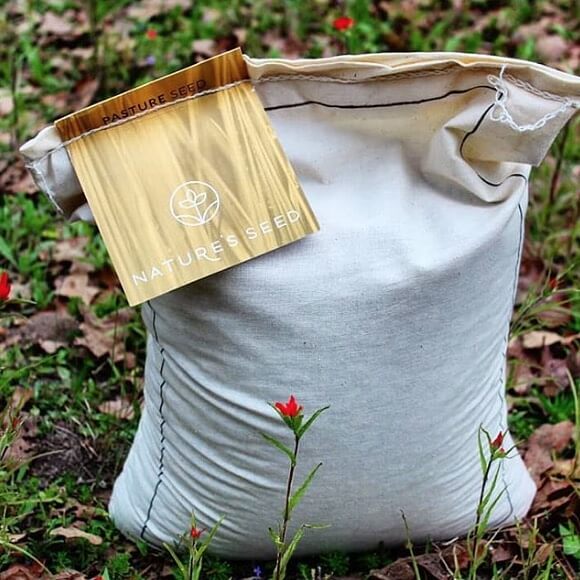

Grass Seed Types
The most popular cool-season lawn grasses include Kentucky bluegrass, perennial ryegrass, and fescues. Some of the most popular warm-season grasses include bermudagrass, zoysiagrass, buffalograss, and bahia.
What about the transitional zone where the northern half of the country meets the southern half? In these areas, both cool and warm-season types can be used — although we usually recommend a tall fescue blend for better coverage.
When to Seed Lawn
After you’ve determined if you’ll be using cool-season or warm-season species, you’re ready to determine your planting date.
Ideally, cool-season grasses should be planted in the spring or fall when your average high temperatures between 60-75 degrees. Warm-season grasses should be planted in the spring or early summer when your average high temperatures are above 80 degrees.
Seed
There are Several different makes and models of seed spreaders:
Hand-held Broadcast Spreaders
Tow Behind/Push Broadcast Spreader
Drop Spreaders
Slit Seeders
Answers
Lawn Grass Seed FAQs
Different grass species take different amounts of time to germinate (sprout). Here’s the most common lawn grasses listed from quickest to slowest. Keep in mind that these times are for seeds planted under ideal conditions – temperature, moisture levels, etc. If planted under less-than ideal conditions these times could be longer.
Perennial Ryegrass: 5-10 days
Fine Fescue: 7-12 days
Tall Fescue: 7-12 days
Buffalograss: 7-14 days
Zoysia Grass: 7-21 days
Bahia Grass: 10-14 days
Bermudagrass: 10-30 days
Kentucky Bluegrass: 14-30 days
Nature’s Seed sells turfgrass blends by the coverage area. These sizes range from 500 sq. ft. to 5000 sq. ft. and are based on our recommended seeding rates for each species. However, we know lawns come it larger sizes especially if you’re planting a park or sports field. For areas over 10,000 sq. ft. in size, please contact us for the best prices possible.
Here’s a handy guide for planting grass seed by the acre based on our recommended seeding rates for each of our turf blends.
Blue Ribbon Kentucky Bluegrass Blend: 218 lbs./acre
Velvet Blue Blend: 131 lbs./acre
Northeast Seed Blend: 131 lbs./acre
Northwest Seed Blend: 349 lbs./acre
Sun & Shade Blend: 262 lbs./acre
Perennial Ryegrass Blend: 436 lbs./acre
Fine Fescue Seed Blend: 349 lbs./acre
Triple-Play Tall Fescue Blend: 523 lbs./acre
Low Maintenance Seed Blend: 262 lbs./acre
Bahia Grass Seed Blend: 218 lbs./acre
Bermudagrass Seed Blend: 175 lbs./acre
Buffalograss Seed Blend: 131 lbs./acre
Zoysia Grass Seed Blend: 88 lbs./acre
While fall planting is the ideal time for cool-season turfgrasses such as Kentucky bluegrass, perennial ryegrass and fescue, springtime can be very successful too. For warm-season grasses like bermudagrass, buffalograss, zoysia grass and bahia, late spring is the best time.
Step 1 – Prepare the area by killing off and/or removing the old lawn or existing vegetation. This can be accomplished using a tiller, sod cutter, or with a glyphosate herbicide. If you use a tiller or sod cutter, break up any soil clumps and rake the area smooth. If you use glyphosate, wait 2-3 weeks and then remove the dead vegetation. Scalping the area with a string trimmer or lawnmower on the lowest setting does this nicely. Follow this up with a vigorous raking to loosen and smooth out the soil.
Step 2 – Sow the seed using a seed spreader. Hand sowing can work for smaller areas, but larger areas should be planted with a mechanical spreader. Follow the spreader manufacture’s recommended settings for the type of seed you’re using. Most manufactures list their settings on their websites.
Step 3 – After sowing the seed work it into the soil by raking lightly or by pressing it into the soil using a lawn roller.
Step 4 – In arid climates, apply a thin layer of mulch to help the soil retain moisture (optional).
Step 5 – Keep the soil constantly moist, but not soaked, until the new grass is two inches tall. This is usually accomplished by watering 2-3 times a day for 5-10 minutes at a time.
Planting into existing grass, also known as overseeding, is one of the best ways to rejuvenate an existing lawn. Not only does overseeding help bare and thin areas fill in, it also introduces newer turfgrass varieties into older lawns. These newer varieties bring with them added resistance to pests and diseases, and improve the overall quality of the lawn. Overseeding can be accomplished in three steps:
Prepare the area by mowing your lawn shorter than usual and removing the clippings. This is important for achieving adequate seed-to-soil contact. For even better results, consider having your lawn core-aerated prior to overseeding.
Sow the seed using a spreader. For overseeding purposes you only need to use half the recommended seeding rate. For example, if the seeding rate was 5 lbs. /1000 sq. ft. for establishing a new lawn, the seeding rate for overseeding an existing lawn would be 2.5 lbs. /1000 sq. ft.
Keep the area constantly moist, but not soaked, while the new seed germinates. Continue this until the new grass reaches the height of your existing grass. Continue to mow as needed but try to limit the traffic on your lawn during this time.
Trying to plant grass seed on hard, compacted soil is challenging. Whatever you do, don’t bring in topsoil and spread it over the hard soil. While it may look like the problem is solved and your grass will even germinate and start to establish, that compacted layer will play havoc with the drainage, root development, and overall vigor of your grass later. However, if you can bring in enough new soil to bury the compacted soil at least 2-3 feet deep than this idea can work, but that much soil over a large area is usually not practical.
The best solution is to incorporate organic matter into the compacted soil at a depth of at least 6 inches, deeper if possible. Organic matter can include compost, lawn clippings, shredded leaves, aged manure, etc. Tilling is often the only way to incorporate this matter into the soil. Make sure the soil isn’t wet or it could do more harm than good. However, a slightly moist soil will make for easier tilling than bone dry soil will. In the future having the area core-aerated yearly will help avoid more compaction.
The best way to sow grass seed, and the way we strongly recommend, is with a mechanical spreader. These spreaders come in many varieties but all function the same basic way. By adjusting the distribution rate these device help to ensure a uniform, consistent spread. This consistency makes for a more efficient use of grass seed and eliminates the patchiness often resulting from hand spreading. Here is a closer look at the different types of mechanical spreaders on the market:
Hand-held Broadcast Spreaders – These are some of the most common and least expensive types of spreaders available. The spreader is held with one hand while the other hand cranks on a handle, flinging the seed over a distance as you walk across an area. These spreaders work great for smaller lawns but aren’t practical for large lawns or sports fields. Flow rate accuracy and quality can also be questionable on some models.
Tow Behind/Push Broadcast Spreader – These types of spreaders fling seed just like the hand-held versions, but are wheeled across the ground instead of carried and are much more efficient for large areas. However, what you make up for in speed and efficiency you lose in precision. Best used for large open areas.
Drop Spreaders – Drop spreaders are also wheeled and pushed/towed along the ground, but instead of flinging seed over a distance they “drop” seed from the bottom of the spreader in a very precise, controlled manner. Drop spreaders are an excellent choice for seeding irregularly shaped lawns and keeping seed out of flower beds, sidewalks, etc. but are more time-consuming than broadcast spreaders.
Slit Seeders – Slit seeders are engine-powered machines that cut small groves into the soil and place the seed directly into these slits all in one pass. They offer unmatched efficiency, accuracy, and seed-to-soil contact and produce some of the best results, but are tricky in tight areas. Used extensively by professionals and can also be rented by homeowners.
Most grasses prefer full-sun (8+ hours of sunlight a day), and some grasses can handle part-sun (4-6 hours of sunlight a day). But for areas that receive 2-4 hours a day, fine fescue is the best choice for northern climates. Unfortunately, if you have an area that receives less than 2 hours of sunlight a day you might need to consider a different type of groundcover.
For shady areas in the southern half of the United States your options are very limited. Warm-season grasses perform best in these southern areas, but warm-season grasses are also known for being intolerant of shade. Some varieties of zoysia can tolerant part-sun conditions, but the most shade-tolerant warm-season grass is St. Augustine (not available in seed form). St. Augustine grass has some drawbacks however, so be sure to do your homework before considering this type of lawn.
Late summer and early fall is the prime time for planting cool-season grasses like Kentucky bluegrass, perennial ryegrass, and fescue. Soil temperatures are warm and nights are cool which encourages quick germination and rabid establishment. Fall also happens to be the beginning of the wetter season throughout much of the United States, and soil moisture levels are near perfect. However, fall is not a good time for planting warm-season grasses like bermudagrass, buffalograss, zoysia grass, or bahia. Wait until late spring for these types of grasses.
Step 1 – Prepare the area by killing off and/or removing the old lawn or existing vegetation. This can be accomplished using a tiller, sod cutter, or with a glyphosate herbicide. If you use a tiller or sod cutter, break up any soil clumps and rake the area smooth. If you use glyphosate, wait 2-3 weeks and then remove the dead vegetation. Scalping the area with a string trimmer or lawnmower on the lowest setting does this nicely. Follow this up with a vigorous raking to loosen and smooth out the soil.
Step 2 – Sow the seed using a seed spreader. Hand sowing can work for smaller areas, but larger areas should be planted with a mechanical spreader. Follow the spreader manufacture’s recommended settings for the type of seed you’re using. Most manufactures list their settings on their websites.
Step 3 – After sowing the seed work it into the soil by raking lightly or by pressing it into the soil using a lawn roller.
Step 4 – In arid climates, apply a thin layer of mulch to help the soil retain moisture (optional).
Step 5 – Keep the soil constantly moist, but not soaked, until the new grass is two inches tall. This is usually accomplished by watering 2-3 times a day for 5-10 minutes at a time.
